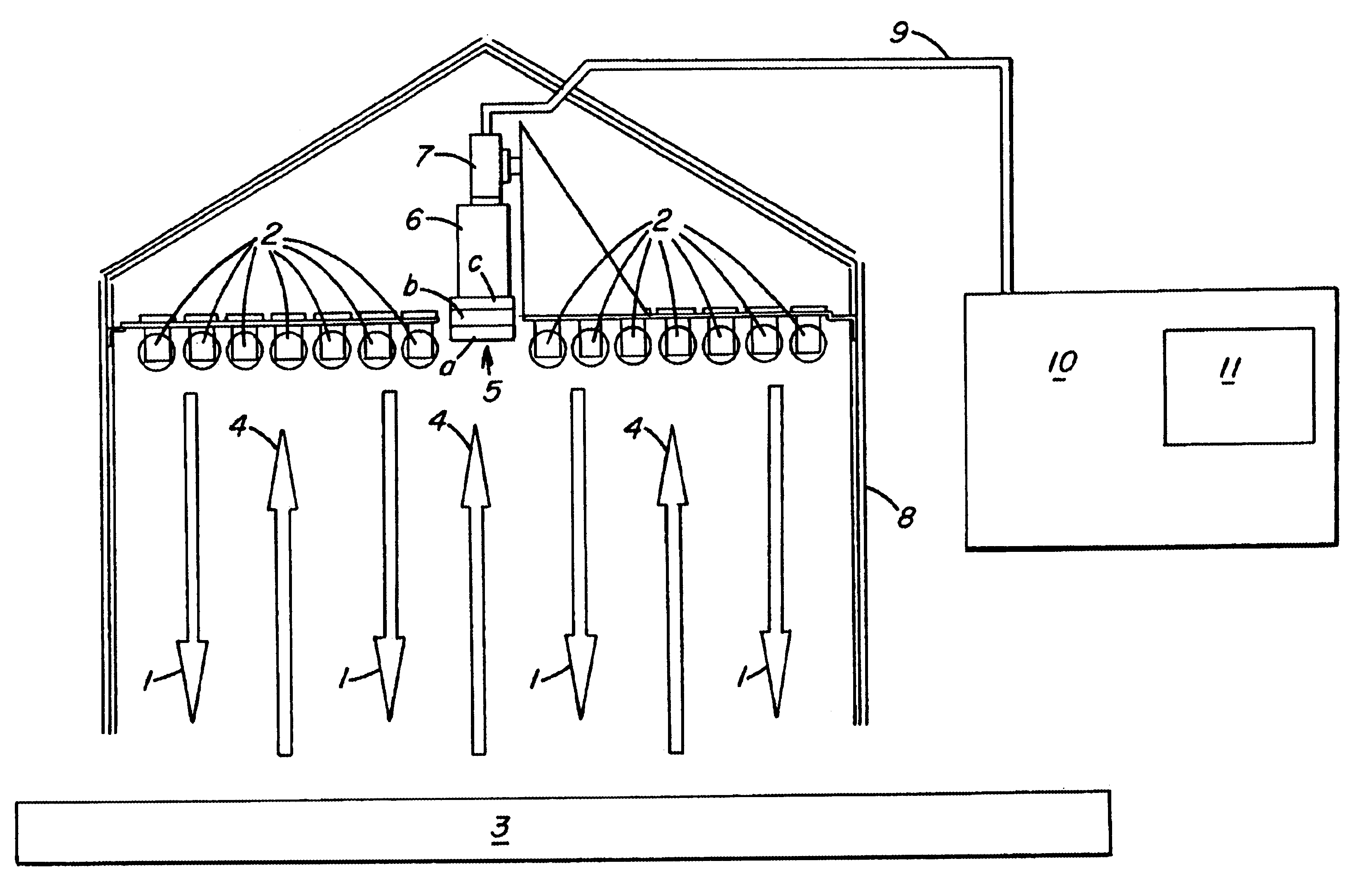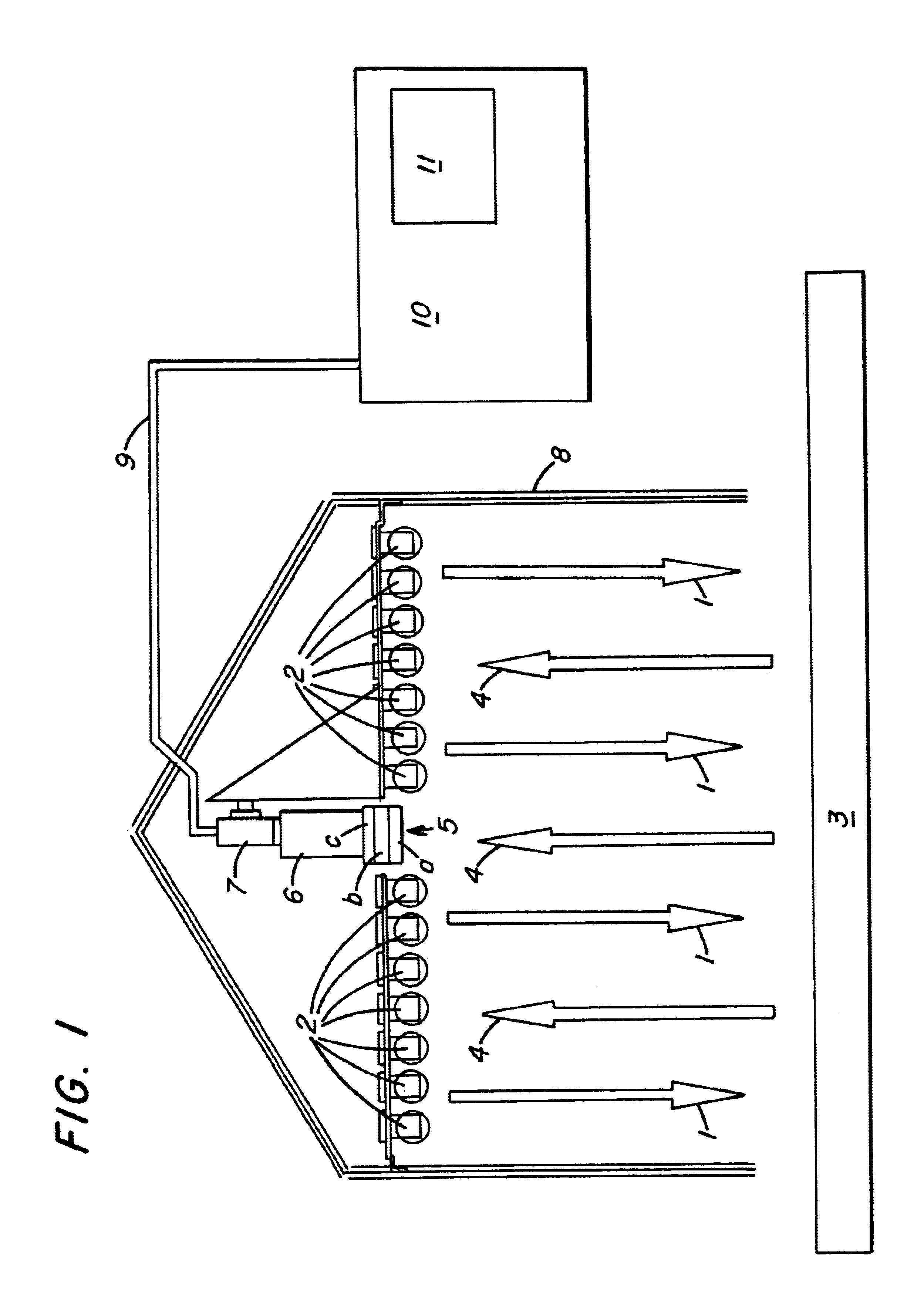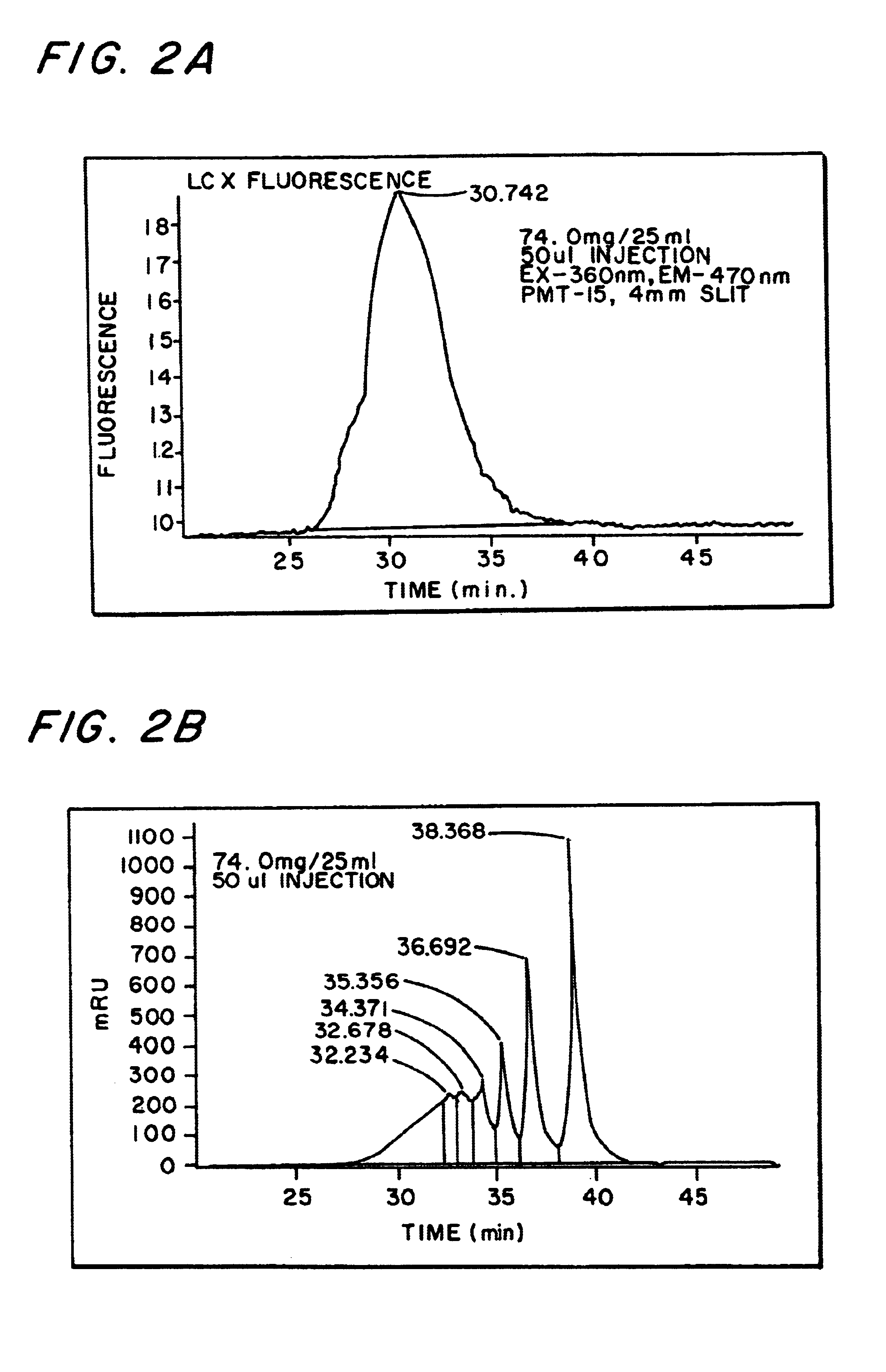In-line process for monitoring binder dosage and distribution on a surface and apparatus useful therefor
- Summary
- Abstract
- Description
- Claims
- Application Information
AI Technical Summary
Benefits of technology
Problems solved by technology
Method used
Image
Examples
example 1
An apparatus corresponding substantially to that shown in FIG. 1 was used to analyze long strands of aspen wood to which polymeric MDI (Mondur 541 which is commercially available from Bayer Corporation) was applied at levels of 0%, 2%, 4%, 6% and 8% to calibrate the device for dosage.
The UV source 2 was made up of eight lamps having 4 foot 40 watt bulbs (F40T12 / BLB bulbs available from GE Lighting, Cleveland, Ohio), and four lamps having 2 foot 20 watt bulbs (F20T12 / BLB bulbs available from GE Lighting, Cleveland, Ohio). The lamps were arranged symmetrically around filter 5, lens 6 and video camera 7 as shown in FIG. 1 to evenly illuminate the aspen strands which were 48 inches from the UV lamps 2.
Composite-forming material 3 was composed of aspen wood strands ranging in size from 0.08″×1.0″×6″ to 0.12″×1.5″×12″ and having a moisture content of 6% by weight. 0%, 2%, 4%, 6% or 8% by weight of polymeric MDI which is commercially available from Bayer Corporation under the name Mondur 5...
example 2
The apparatus used in Example 1 was modified to eliminate the interference of wood rot fluorescence when a monochrome camera is employed.
The number of lamps used as the UV source was increased. A total of fourteen lamps having 4 foot 40 watt F40T12 / BLB bulbs (GE Lighting, Cleveland, Ohio) were used as UV source 2. A third layer was added to filter sandwich 5. This layer was a visible band-pass filter selected to increase the contrast between the binder and the lignocellulose material and to eliminate any interference from the fluorescing wood rot. The filter used was Edmund Scientific's Night Blue transparent acrylic filter from filter assortment F39418. Curve D in FIG. 10 is a transmission spectrum of the Night Blue filter. Lens 6 was replaced with an 8 to 48 mm zoom lens (lens F53152 available from Edmund Scientific, Barrington, N.J.).
FIG. 11 is a 2-dimensional contour map of the UV-fluorescence of the polymeric MDI (Mondur 541 available from Bayer Corporation) and a yellow fluore...
example 3
The apparatus used in Example 2 was further modified to allow the quantitative and qualitative analysis of multiple fluorescing materials in the composite-forming material. This was accomplished by eliminating the third layer of the filter sandwich (filter 5c), i.e., the Night Blue transparent acrylic visible band-pass filter. A Cohu Model 2222-2340 color camera (available from Edmund Scientific) was substituted for the camera used in Example 2.
Images of wood strands dosed with 5% polymeric MDI were then taken with this modified apparatus. FIG. 13 is a full color image from camera 7 in which wood rot is represented by the yellow green fluorescence, the isocyanate binder is represented by the light blue fluorescence and the un-dosed wood is represented by the dark blue fluorescence. This image was then processed by splitting the full color image into red, green and blue images. The yellow green fluorescing wood rot had a component in the red and in the green image but virtually none ...
PUM
 Login to View More
Login to View More Abstract
Description
Claims
Application Information
 Login to View More
Login to View More - Generate Ideas
- Intellectual Property
- Life Sciences
- Materials
- Tech Scout
- Unparalleled Data Quality
- Higher Quality Content
- 60% Fewer Hallucinations
Browse by: Latest US Patents, China's latest patents, Technical Efficacy Thesaurus, Application Domain, Technology Topic, Popular Technical Reports.
© 2025 PatSnap. All rights reserved.Legal|Privacy policy|Modern Slavery Act Transparency Statement|Sitemap|About US| Contact US: help@patsnap.com



